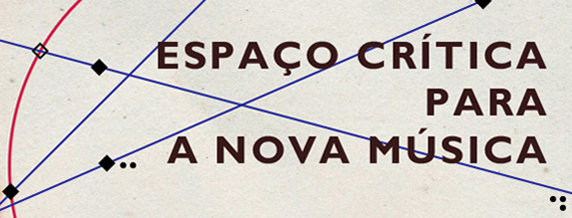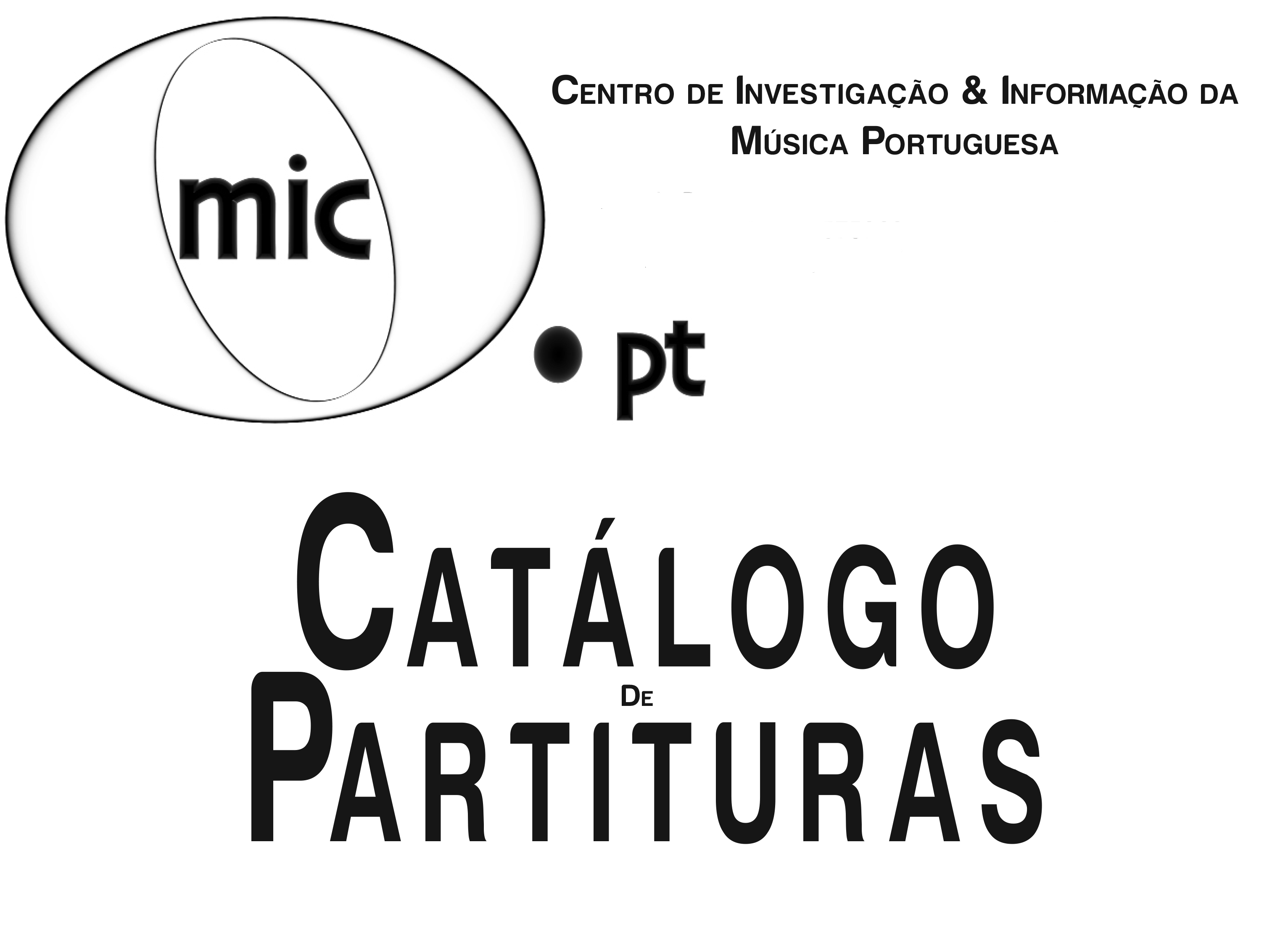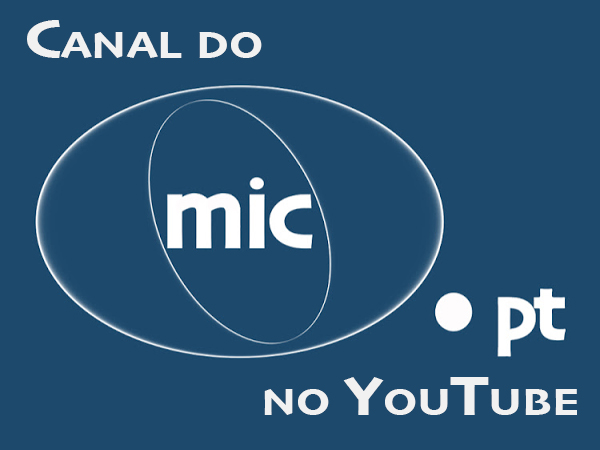“Composing is a passion in the word’s etymological meaning. Right at the beginning this passion appears as a painful experience. Only after, as time goes by and if everything goes well, does it assume all other meanings.”[1]
As composer Eurico Carrapatoso began his career relatively late (he was 23 when he started studying music), nevertheless he rapidly gained his respective place in the composition field in Portugal. “He affirmed himself as a rare case of popularity among the public, either due to the humour and irony contained in some of his works, or through the integration of tonal affinities in his language.”
[2] Eurico Carrapatoso declares to be a composer essentially free from stylistic constraints, so in his aesthetic attitude one can distinguish the influences from Francesco Landini to Gabriel Fauré, from Guillaume de Machaut to Igor Stravinsky, from Pêro do Porto to Fernando Lopes-Graça, from Claudio Monteverdi to Olivier Messiaen.
Eurico Carrapatoso maintains a direct connection with the musical traditions of the past (both at the formal and tonal level), intending to surpass the divorce between audience and contemporary music and inverting in his own manner the famous words of Arnold Schönberg: “If it is art, it is for all, if it is not for all, then it is not art.”
[3] His music has a style, which confronts archaic modality, chromatic tonality, “pop” harmonisations and some vanguard techniques. “I handle the perfect chord with the same liberty as I use a cluster. The responsibility of using both of them is conferred by the context, in which they are inserted, as well as through the coherence, which they assume
a posteriori (…).”
[4]
Eurico Carrapatoso was born in 1962 in the Bragança district. He graduated in History from the
Faculdade de Letras (the University of Oporto). He initiated his musical studies in 1985, having been successively the pupil of José Luís Borges Coelho, who became his first composition teacher, Fernando Lapa, Cândido Lima and Constança Capdeville, who was his composition teacher between 1988 and 1989. "[Constança Capdeville's] almost oneiric vision of the world had a hypnotic effect on me, which prevails until today. Her lessons had a sandalwood fragrance. Her presence was ethereal, when she wandered quietly, as if flying just above the surface..."
[5] Between 1991 and 1995 Eurico Carrapatoso was pupil of Jorge Peixinho, having concluded, under his orientation, the Composition Superior Course at the Lisbon National Conservatory. “It was one of the most intense and complex personalities of Portuguese culture”
[6], remembers the composer. “And if my story as composer is immersed in the influence of all my teachers, I recognize in Jorge Peixinho a principal influence, not at the idiomatic level, certainly, but at the level of lyrical gestures, being released from his last works (…).”
[7]
Eurico Carrapatoso was assistant in Economic and Social History at the
Portucalense University. He taught composition in various institutions, namely at the Superior School of Music in Lisbon and at the National Superior Orchestra Academy. Since 1989 he has been composition teacher at the Academia de Amadores de Música and the National Conservatory, being professor of the latter institution. He receives regularly commissions from the main Portuguese cultural institutions and his music has been performed, published and promoted since 1987 not only in Europe, but also on other continents.
Eurico Carrapatoso founded or was jury member at various composition competitions, such as the Jorge Peixinho Award,
Eborae Mvsica – 2.ª Escola de Évora Award and the
Dom Diniz Award. He won the first editions of the Fernando Lopes-Graça Composition Award of Tomar and of the Francisco de Lacerda Award. His music represented Portugal three times at the UNESCO International Composers’ Tribune, realized in Paris in 1998, 1999 and 2008, with “Cinco melodias em forma de Montemel” (for soprano, horn and piano), “Deploração sobre a morte de Jorge Peixinho” (for large orchestra) and “O meu poemário infantil” (for tenor and orchestra). One of his more recent works, “A morte de Luís II da Baviera” (2010), musical drama in one scene and one act, on the text of Bernardo Soares (adapted by João Botelho), for soprano, mezzo-soprano, choir and orchestra, was commissioned by ArDeFilmes and included in “The Film of Disquiet” by João Botelho. In November 2012 Eurico Carrapatoso will premiere a new work for orchestra commissioned by the Guimarães 2012 – European Capital of Culture.
In May 2001 the Historic Society of Portuguese Independence distinguished Eurico Carrapatoso with the Award of National Identity. On June 10th 2004 the Portuguese President decorated him with the Order of Prince Henry the Navigator and last year the
Secretariado Nacional da Pastoral da Cultura distinguished him with the
Árvore da Vida – Padre Manuel Antunes Award.
The 1st Postmodern Composer in Portugal?
The weight of history creates an enormous pressure, like sea water at large depths.”[8]
As Eurico Carraparoso recalls, his experience of playing the guitar by ear at the age of 13 constituted “a definitive opening to the universe of music (…) through a tropical propaedeutic, through Tom Jobim.”
[9] In his artistic attitude the composer gives value to tradition, paying more attention to “writing music than to creating history”
[10], having as a basis two “theoretical and practical bodies”: tonality and Portuguese identity, continuing, in this sense, the tradition of Fernando Lopes-Graça, who influenced him directly, particularly in what concerns his choral music, in which, now and then, one can hear the sound of memory from the musical environment of his native land, which is situated in the Mirandela district (North of Portugal). Nevertheless, the composer does not cultivate the musicological approach of Fernando Lopes-Graça and Michel Giacometti, who collected Portuguese traditional music.
According to Eurico Carrapatoso there are two main gestures prevailing in the history of music – classicism, by nature sober and Apollonian, and mannerism, the attitude of which is reflected so many times in the Dionysian gesture an the taste for pure mathematic speculation. In this context, emphasises the composer, nowadays “we are in the most extensive mannerist period in the history of music”.
[11] “The «obsession for originality» of the Darmstadt tradition certainly silenced many artistically valid forms of expression (…)”
[12], however, at the same time, the composer recognizes that “the vigilant experimentalism, the radical means of expression, had an essential role in the evolution of [Western] composition.”
[13] His musical language, even though having evident tonal affinities, does not have the intention to “be the standard-bearer for a return to the old forms or, much less, for a radical aesthetic revenge.”
[14] “One thinks that 20th Century music was the one that evolved most throughout history, but perhaps it is not so…”
[15], challenges the composer and adds: “Is it not time to forget the musical and aesthetical fundamentalisms and to free the creation act from the solemn and sacred-saint parameters of the «theology of originality»?”
[16]
Eurico Carrapatoso is author of more than 150 works of various genres – chamber music, orchestra, choir pieces, operas and sacred music, among others. And if his piece for 12 clarinets “Roma é amoR” (1995) makes use of “micro-polyphonic-pan-chromatic” techniques, his “Chorinho de mê filh’Antônio” is settled in a “touching” E minor, what in both cases, according to the composer, constitutes an essential gesture of liberty.
A Subjective Reflection
Postmodernism
[17], a term of American origin has come into use in an extensive manner since the end of the 1960s with a broad range of connotations. Some of them come from the associations with the “modern” and “modernist”, whereas other from the inconsistency of the implications of the prefix “post” to “modern” – contestation or extension, difference or dependence, regress or progress. Postmodernism is used to denominate a style, which questions some superimpositions on modernism, its social base and objectives – the faith in progress, absolute truth, emphasis on the problems of form and the renouncement of explicitly social functions of art, putting discontinuity above continuity, variety above similarity and indeterminacy above rational logic. In this context some aspects of postmodernism have its modernist ancestors (such as the Dada movement or the futurists, for example) or a long tradition in music (collage, juxtaposition, appropriation and quoting). It is discussed whether postmodernism can be an attitude recurring throughout history – from this perspective the dialectics modern/postmodern could be an altering aesthetic cycle like classic/romantic.
The application of the term “postmodernism” in relation to Eurico Carrapatoso’s music, the work of whom has created controversies in the Portuguese musical environment, provoking strong reactions of the critics (both positive and negative), raises some problems of musicological and aesthetic nature, which on the occasion of this “In Focus” deserve a short divagation. Making reference to the text by Jonathan D. Kramer, “The Nature and Origins of Musical Postmodernism”
[18], on needs to stress that not all music created presently, but which refers itself in a more direct manner (or not) to history, can be denominated with this term. The American author and composer understands postmodernism as an attitude, which in fact could be distinguished during various periods in the history of music (for example at the beginning of the past century in the music of Gustav Mahler or Charles Ives, since their compositional practices could be perceived according to contemporary musical values and strategies of listening) and which is related to, in its basis, with the way of synthesising (in many cases through a highly ironic approach) the variety of musical languages, either classical, experimental or popular. Postmodernism, even though many times perceived as opposition to modernism, does not mean neither its rejection, nor the nostalgia for the golden period of tonal music (classicism and the romantic period). Consequently, it is necessary to distinguish the opposition of postmodernism to anti-modernism, the attitude of which is subscribed precisely in this more conservative stance (without the pejorative connotations, which this term can imply).
Taking all these aspects into account, perhaps it would be more adequate to see Eurico Carrapatoso’s aesthetic attitude not within the postmodern philosophy, but precisely as anti-modern? In fact, it is not an objective of this “In Focus” to respond to this complex question, but only to present the problem of “classification”, which in itself is always imperfect, particularly in the case of contemporary music, in which prevails the convergence of various aesthetics, marked by individual points of view.
Jakub Szczypa
The Composer’s Response
I cannot agree with the idea from the last paragraph. Apart from being contained in form of a question, as it was accurately referred, it insinuates subliminally that my aesthetics is anti-modern. Classifications of this type are always imperfect. I could not agree more. However this one, besides being imperfect, seems to be contaminated with the mistake of parallax, to which the 19th century “Zeitgeist” made us accustomed to, fallen into disuse since some time and which nowadays can only make us smile.
Anti-modern aesthetics? Nothing further from the truth. The prefix “anti” has a melodramatic pulse, which does not apply itself to my worldview, to my way of behaving, being and finally, to my form of artistic expression. My aesthetics could never be anti-modern. Neither anti-modern nor anti-nothing. My music is. Only is. It does not have masks.
I am at peace. There is no pugnacity in my condition as human and artist. I live in total harmony with my peers. Only a mind with an interior conflict could ever envision in what I do the “anti” prefix.
In order to make things clear: I follow my path, naturally, in full enjoyment of liberty. I follow it, just as Emmanuel Nunes, supposedly more modern, follows his. Just as Pedro Amaral, also supposedly more modern – even though in a quite different trajectory – follows his. Just as Nuno Côrte-Real, perhaps more modern than me (despite apparently not having such a modern trajectory as the two other comrades in arms), follows his. Just as António Pinho Vargas, the Oliveiras, Luís Tinoco, João Madureira, the Azevedos, Carlos Caires, Alexandre Delgado, Cândido Lima, Fernando Lapa, Eugénio Amorim, only to mention some, follow theirs.
It is not because of the fact that we follow different paths and diverse forms of expression that my music is anti-modern or anti-whatever, or that their music is more modern or more whatever-it-would-be (without forgetting the problem of comparative graduation: more modern than / less modern than / so modern as).
It would be of priority, indeed, and above all, to define what is a modern aesthetic attitude, now positively, for the purpose of clarifying the concepts at stake and the universe in which they move. What is modernism today? If someone did respond to this question, without plunging into a marshy matter, would already become, just for this reason, a prodigy. And, as we all agree, it would be a sufficiently dense subject, which would certainly not fit into a paragraph of only half-dozen lines.
Finally, for the last clarification: art is inseparable from the individual. It carries with it the nature of the personality. If I had an anti-modern aesthetic personality I would certainly not waste my time to promote, acclaiming in multiple manners either in public lectures, within my lessons, or in the space of new technologies of information, the phenomenon, which I come to designate, for some years now, as the “second renaissance of Portuguese composition”. A fascinating phenomenon precisely for its splendid aesthetic diversity and for the multiplicity of forms of artistic behaving, being and feeling, which it reveals.
In the concession of the proposed terminology, making a stylistic exercise, only with the aim to disassemble this type of abusive classifications, exposing its fragility, I could add that the mentioned “second renaissance” (a duality quality/quantity of impressive creative contemporary Portuguese) offers a quite varied menu, which goes from the less modernist (the rare), to the well-done modernists, passing through the medium. Therefore, an offer for all tastes. I used deliberately the culinary metaphor since, in the prism of steak nomenclature (rare, medium and well-done, without forgetting the tartar) one can understand more clearly a real philosophical category of this type of classifications: postmodernism, ultra-modernism, anti-modernism, a-modernism, pan-modernism, and so on. Far from the long-term, which is the time of essence, these classifications are hopelessly infected by the stigma of short-term, which is that of appearances and human passions. And it is in this cyanotic environment where the aesthetic prejudice parades, triumphing over that, which is, without any shadow of doubt, the most vulnerable of philosophical categories: the personal taste.
Eurico Carrapatoso
(English translation: Jakub Szczypa)
Eurico Carrapatoso on YouTube
“Deploração sobre a morte de Jorge Peixinho”(1998)
Orquestra Nacional do Porto, Mark Foster (conductor)
“Pórtico" (5.ª de "Cinco canciones para piano y voz emocionada") On the text of Federico Garcia Lorca, within the 100th anniversary of his birth
Sónia Grané – soprano
José Manuel Brandão – piano
Live recording at the Cascais Cultural Centre (June 30th, 2009)
“A morte de Luís II da Baviera" (2010)
On the text of Bernardo Soares (“The Book of Disquiet”), libretto by João Botelho
Angélica Neto (Morte), Elsa Cortez (Providência)
Coro Ricercare, Pedro Teixeira (conductor)
Sinfonietta de Lisboa, Vasco Azevedo (conductor)
Commissioned by the
ArDeFilmes for "The Film of Disquiet" by João Botelho Recorded in the Dominican Convent, Lisbon, November 27th 2010 (sound recording by Carlos Marecos)
“Sete peças em forma de boomerang – nº 4" (2000)
José Massarrão (saxophone)
Sinfonietta de Lisboa Vasco Azevedo (conductor)
---
1Interview to Eurico Carrapatoso by Maria Ana Freitas in:
Ideias Soltas; English translation: Jakub Szczypa
2 Vanda de Sá, “Carrapatoso Eurico” in: Enciclopédia da Música em Portugal no Século XX, coordination by Salwa Castelo-Branco, Lisbon 2010, p. 251; English translation: Jakub Szczypa
3 Inversion of the phrase by Arnold Schönberg: “...if it is art, it is not for all, and if it is for all, then it is not art”; "New Music, Outmoded Music, Style and Idea" (1946), in: “Style and Idea: Selected Writings of Arnold Schoenberg”, University of California Press 1984, p. 124
4 Interview to Eurico Carrapatoso in: Sérgio Azevedo, "A Invenção dos Sons. Uma Panorâmica da Composição em Portugal Hoje", Editorial Caminho, Lisbon 1998, p. 403; English translation: Jakub Szczypa
5 Interview to Eurico Carrapatoso in: Sérgio Azevedo, op. cit., p. 402; English translation: Jakub Szczypa
6 ibidem
7 ibidem (revised by the composer, March 22nd 2012)
8 Interview to Eurico Carrapatoso by Maria Ana Freitas in:
Ideias Soltas; English translation: Jakub Szczypa
9 Interview to Eurico Carrapatoso by Carlos Vaz Marques in:
mic.pt, 2008; English translation: Jakub Szczypa
10 ibidem
11 ibidem
12 Interview to Eurico Carrapatoso in: Sérgio Azevedo, op. cit., p. 403; English translation: Jakub Szczypa
13 ibidem
14 ibidem
15 Interview to Eurico Carrapatoso by Carlos Vaz Marques in:
mic.pt, 2008; English translation: Jakub Szczypa
16 Interview to Eurico Carrapatoso in: Sérgio Azevedo, op. cit., p. 404
17 Jann Pasler, "Postmodernism" in:
Grove Music Online. Oxford Music Online (January 23rd, 2012)
18 Jonathan D. Kramer, “The Nature and Origins of Musical Postmodernism” in: Judy Lochhead and Joseph Auner, “Postmodern Music/Postmodern Thought”, Rutledge 2001





